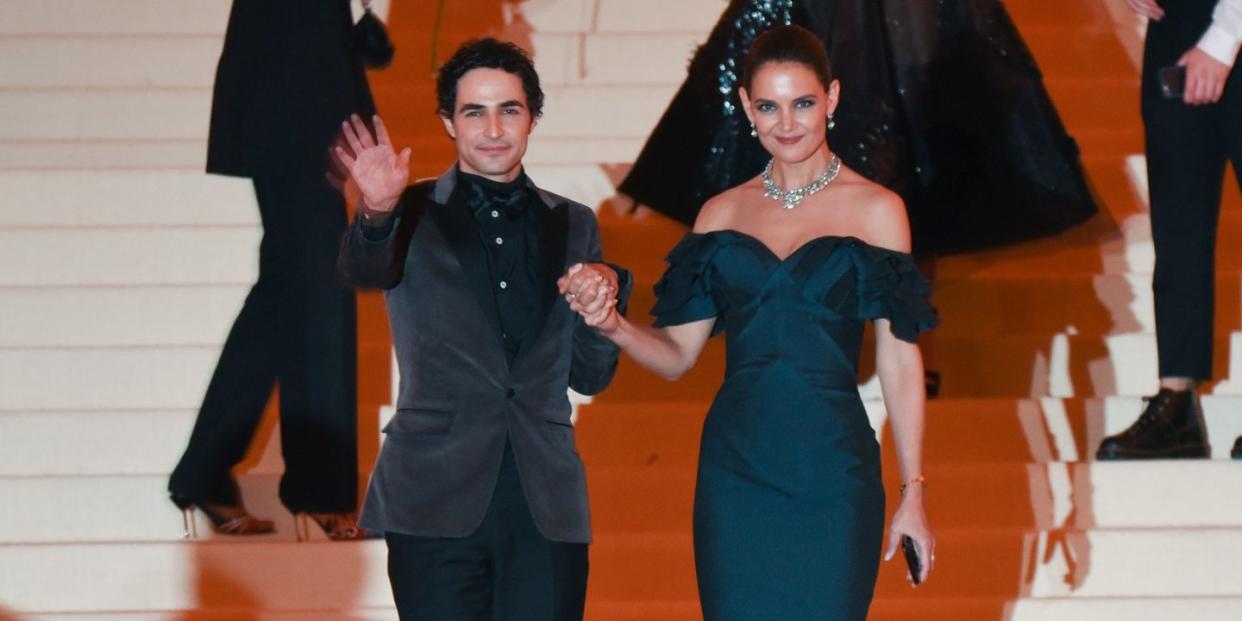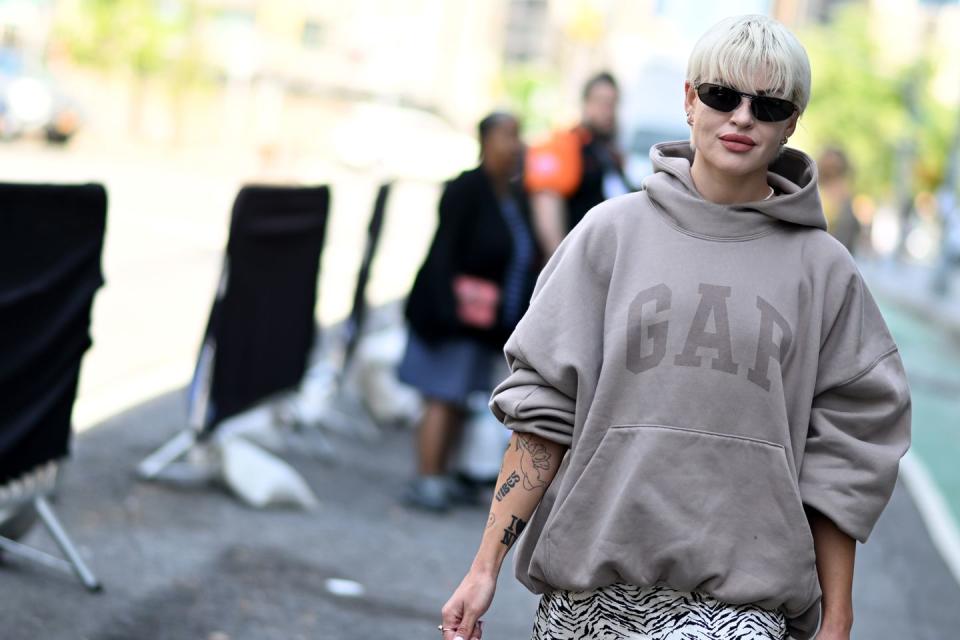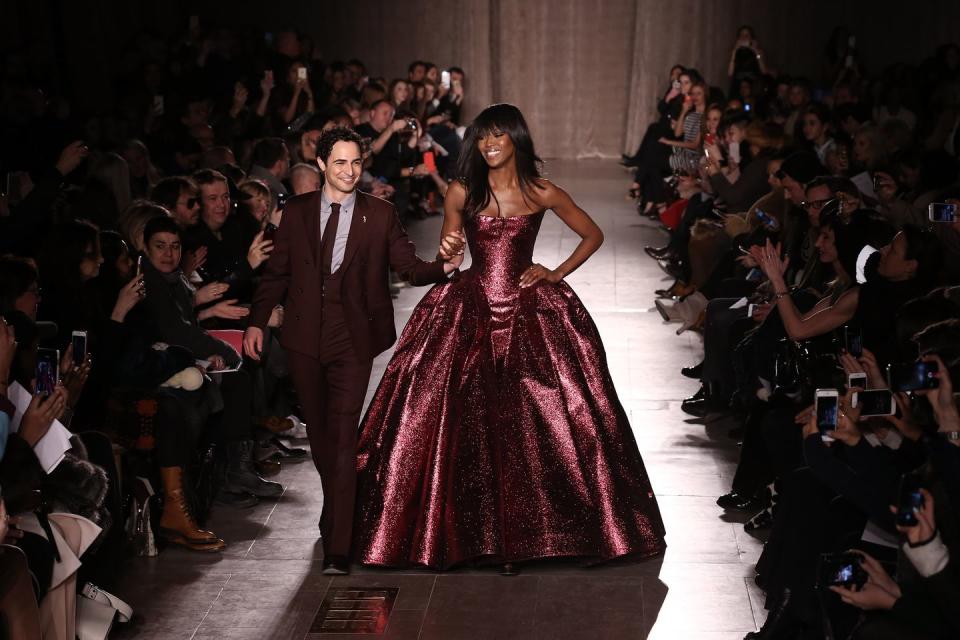Can Zac Posen save Gap?

When I was a teenager back in the early Noughties, I dreamed of a job at Gap. I saw working on the shop floor at my local (now closed) store in Canterbury as an elevated alternative to waitressing shifts in my village pub. Gap was understated, affordable and upbeat, an early champion of the now much-overused phrase ‘everyday classics’. It wasn’t intimidatingly cool, yet it was aspirational in a relaxed, utilitarian way. Its pieces could be worn by everyone from Madonna to Missy Elliot, both former brand ambassadors, to a 15-year-old still making very real sartorial missteps with denim.
These were low-risk-pieces that didn’t shout; clothes that had cross-generational appeal. I was too young to appreciate Joan Didion’s campaign for the brand in 1989, but was just the right age to be won over by Sarah Jessica Parker’s ad with Lenny Kravitz in 2004, which had me saving my waitressing wages for a pair of low-rise Gap jeans. Everyone I knew had a 'GAP'-emblazoned hoodie, and the only reason my friends and I had ever heard the song ‘Mellow Yellow’ was via the brand’s 1999 normcore video campaign. For a time, Gap was ‘it’: a budget-friendly version of Levi’s, firmly at the forefront of the zeitgeist. At its 1999 peak, the brand had more than 2,000 stores around the world, with sales reaching a colossal $11.6 billion. Today, Gap is in a very different position. Sales are at a low and – even with its latest star appointment in the form of new creative director Zac Posen – its future looks unclear.

At the same time that my mid-teen regional self was desperate for the low-rise jeans SJP wore in her Gap ad, the company’s sales were already starting to dwindle. Its president, Mickey Drexler – who had spent 20 years turning the business into a global behemoth – was fired amid the downturn in 2002. He went on to to sprinkle his Midas touch elsewhere, specifically at the then-ailing preppy US label J Crew, which he transformed into a stylish hitmaker popular with Michelle Obama. Drexler’s skill was giving brands an identity, and without him in the driving seat, Gap began to experience an identity crisis – one which it has struggled with ever since.
Drexler might not have founded Gap (that title goes to a property developer businessman named Donald Fisher), but he did lay its foundations: democratic, low-key style for everyone. Colour was key, with well-made essentials in saturated tones, as was comfort. There were separate menswear and womenswear categories, but easy fluidity between the two; a Gap linen shirt or polo could be worn by either sexes. He created a modern, fuss-free uniform that felt optimistic and cool. The brand’s logo became world-famous, as recognisable as those golden McDonalds arches. Cult director Steve Jonze was enlisted to create a one-off campaign. Gap went beyond the high-street giant to become a cultural bellwether.

Gap’s problems arose as shopping centres and bricks-and-mortar stores began suffering under the weight of e-commerce – an issue it tackled by routinely slapping huge discounts across its windows and online, which cheapened the public perception of the brand. Another blow came in the form of competition. When Gap emerged on the fashion scene, it was the only brand offering relaxed wardrobe basics. Soon H&M and Uniqlo began nipping at its heels. Fast-fashion brands, from Zara to Topshop, enticed customers away with their ever-changing roster of catwalk-inspired looks. Internally, the Gap leadership team kept changing, which in turn meant that the brand’s identity felt inconsistent and confused. In 2006, the company was widely criticised after it emerged that its garment factory employees in Jordan were being mistreated and forced to work in unsafe conditions. The controversy continued after a 2010 fire at a Bangladeshi factory that supplied clothes to Gap stores resulted in the deaths of 20. Customers were finding more and more reasons to stop shopping at the brand. In 2020, in the hope of reviving its image and fortunes, Gap struck a 10-year collaboration deal with Kanye West and his Yeezy line. The partnership had a somewhat shorter lifespan after the rapper backed out two years in, citing breach of contract, leaving the brand even more unclear about its point of view. While West had been given a huge distribution platform to sell his wares, Gap was left with very little in return.

Just when it looked as if Gap was destined to dwell in the fashion backwaters, it received an unexpected helping hand from the Barbie family. Mattel president Richard Dickson, who is credited with restoring the reputation of the world-famous but often contentious toy doll, was made Gap’s new CEO in July 2023. Dickson was responsible for the more diverse and size-inclusive Barbies that were rolled out in the past few years, along with new brand collaborations and marketing campaigns that led to the launch of Greta Gerwig’s box office-smashing movie. A transformational brand builder, Dickson could well be the missing piece Gap needs to revive its business.
All this brings us to the brand’s latest appointment: Zac Posen as creative director. The designer, who is best known for his red-carpet looks, was forced to close his luxury label House of Z in 2019. Although it might seem an unlikely pairing – the Hollywood dress designer and the high-street basics brand – Gap and Posen have more in common than initially appears. They both have mass appeal (Posen is a household name thanks to his work as a judge on Bravo TV’s Project Runway) and they both embrace inclusivity – Posen through dressing plus-size women including Oprah Winfrey, and Gap through its wide sizing range and diverse campaigns. The challenge and potential magic will hinge on whether Posen can bring luxury and desire without alienating the Gap customers. In a time where there is more interest than ever in elevated essentials and clothes to wear on repeat, there is huge potential in the Gap playbook.

What’s needed is a thoughtful creative partner to reinvigorate its clothing, merchandising and marketing. Posen has the technical ability and experience in creating clothes that women really want to wear on the red carpet at least, but his success at the high-street giant depends on whether he can convert these skills to the mass market. Together with brand developer wunderkind Richard Dickson, he could be the one to finally turn the ship around, as long as he doesn't tip the balance too far into catwalk realm. Evolution is essential but, for this to really work, Posen and Dickson must return to the heart of the brand – accessible, hardworking, versatile staples that have in-built longevity and don't follow a trend cycle – and recontextualise them for modern audiences. Timeless classics with a dash of luxury fairy dust; nothing else could fill the gap.
You Might Also Like


